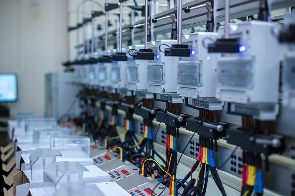Electricity consumers could have been spared the burden of having their tariffs increased by as much as 30 percent if the Public Utilities Regulatory Commission (PURC) had not been overly conservative with the contribution of hydro power, which is the cheapest source in the energy mix, the Institute for Energy Security (IES) has argued.
The energy think-tank contended that the PURC’s assumption that hydro will constitute 26.11 percent of the power generation mix contributed to the level of hike in end-user electricity tariffs, as announced this week by the regulator.
In its projection, which is contrary to the PURC’s, water elevations for Bui and Akosombo generating stations (GS) have improved and are capable of producing close to 38 percent of power in 2023. This, the IES, believes should have considerably lowered the rate consumers have been asked to pay, effective February.
“Although the IES has anticipated that the average electricity end-user tariff (GH₵/kWh) covering residential, non-residential and special load tariff electricity consumers will see an increase within the year, the expected increase in tariff was anticipated to be marginal should more of hydro-electric power be produced from the generation mix,” IES said in a statement to the B&FT.
Should the PURC decide to maintain the 26.11 percent hydro-thermal and 73.89 percent thermal electricity generation mix for 2023 as the basis for the high tariff increment, IES said that position would amount to promoting inefficiency and deliberately burdening Ghanaians with high electricity cost.
While agreeing to the other variables – cedi depreciation, inflation rates and the Weighted Average Cost of Gas (WACoG) – as factors which informed the end-user tariff increment of 29.96 percent for electricity to all consumer groups, it however disagreed with the generation mix factor that has been pegged at 26.11 percent for hydro and 73.89 percent for thermal.
“The IES is concerned in particular about the assumption used in establishing the new electricity tariffs beginning February 1, 2023. On the four key variables, the IES believe the rates for cedi/dollar exchange rate and inflation rates reflect market conditions.
“The IES however considers the assumption used by the PURC for the electricity generation mix of 26.11 percent hydro and 73.89 percent thermal as baseless. That assumption amounts to giving priority to thermal power generation over hydro, given that water elevations for Bui and Akosombo generating stations (GS) have improved and are capable of producing close to 38 percent of power in 2023, in IES’ estimation,” a portion of the statement read.
Explaining why it believes PURC has been very modest in its estimation of hydro power generation for the period, it said data from Akosombo and Bui indicate elevations at the beginning of 2023 compared to previous years are in a better positions to produce more electricity than the thermals.
For instance, it said with a year-start Akosombo water level elevation of 83.10 metres (272.66 feet), it is estimated that total energy production from Akosombo GS could fall between 7,500 and 8,000 gigawatt hours (GWh) for 2023, with the Kpong GS producing roughly 990 GWh of electric energy over the period.
The statement added: “Bui’s water elevation is expected to help produce more megawatts to meet increasing electricity demand particularly at peak hours, and extended to support voltage on the grid and help reduce transmission losses if dispatched conservatively throughout the year.
“The Institute agrees with the expectation that the bulk of capacity generation for 2023 will come from thermal sources if natural gas supply is sustained and planned plant maintenance schedules are strictly adhered to. However, with improved water-head levels, hydro-power generation is estimated to produce close to 38 percent of 2023 capacity, should hydro-electric have dispatch priority over thermal in the generation mix.”
Also, Bui GS’ year-start elevation of 178.99 metres above sea level (masl) is enough to possibly produce an estimated 1,056 GWh of electricity in 2023, IES said.
“IES, therefore, calls on the PURC to reconsider the energy mix assumption used in the tariff adjustment (to reflect improved water-head levels), as that has an impact on the Weighted Average Cost of Gas – which has been reviewed to US$6.0952/MMBtu from US$5.9060MMBtu.
This, the IES believes, will bring down the 29.96 percent tariff increase for all electricity consumer groups, thus introducing some relief to the already burdened citizens in the face of the current economic crisis.
Business News of Thursday, 19 January 2023
Source: thebftonline.com

















